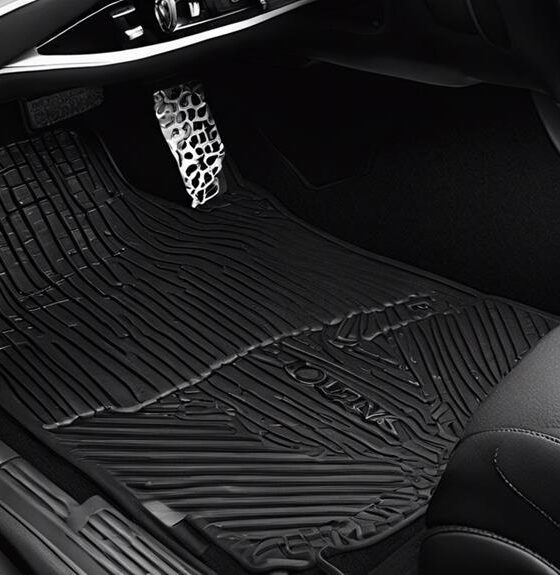Appliances
How Is a Fan Regulator Connected to Fan?
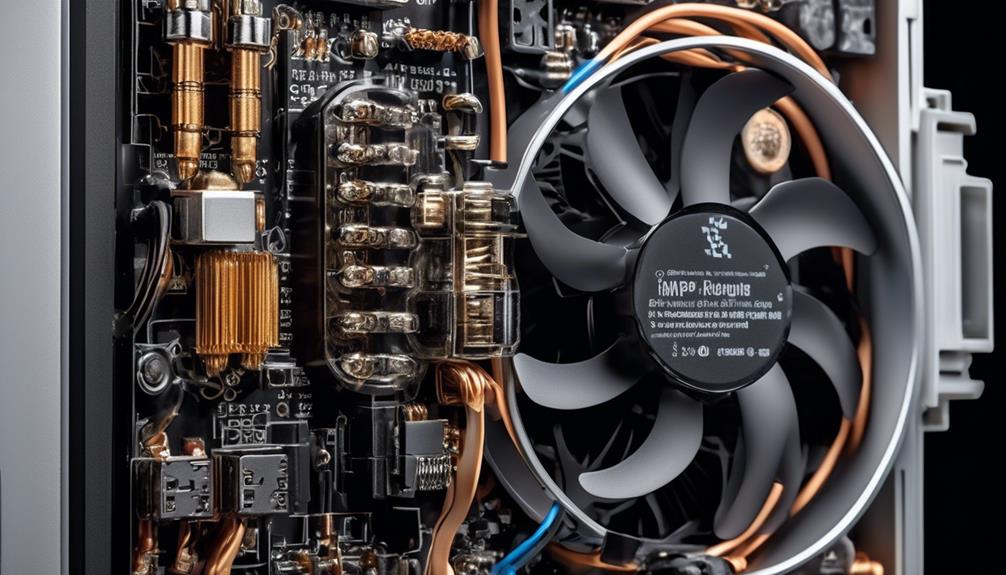
We recognize that the idea of attaching a fan regulator to a fan might appear daunting. Nonetheless, we guarantee that it’s a simple procedure, easily done with a bit of direction.
In this article, we will provide you with a step-by-step guide on how to connect a fan regulator to a fan. We will explain the basics of fan regulators, discuss different types of connections, and explore the wiring configurations involved.
By the end, you will have a clear understanding of the role each wire plays in regulating fan speed. So, let's get started and demystify the process of connecting a fan regulator to a fan.
Key Takeaways
- Voltage regulation ensures a steady and constant voltage output to the fan.
- Different methods, such as variable resistors or PWM controllers, can achieve fan speed control.
- Proper grounding is essential for safety and should be connected to a reliable ground source.
- Accurate fan speed regulation depends on proper wiring connections.
Understanding Fan Regulator Basics
We will now delve into the fundamentals of fan regulators, aiming to provide a clear and concise understanding of their operation. Understanding voltage regulation and the importance of fan speed control are key factors in comprehending the basics of fan regulators.
Voltage regulation is a critical aspect of fan regulator operation. It refers to the ability of the regulator to maintain a steady and constant voltage output to the fan. This regulation ensures that the fan operates at the desired speed, irrespective of fluctuations in the input voltage. By stabilizing the voltage, fan regulators prevent damage to the fan motor and ensure consistent performance.
Fan speed control is another crucial aspect of fan regulators. It allows users to adjust the speed of the fan according to their needs. This flexibility is beneficial in various situations, such as optimizing cooling efficiency, reducing noise levels, or controlling air circulation. Fan speed control can be achieved through different methods, including using a variable resistor or a pulse width modulation (PWM) controller.
Different Types of Fan Regulator Connections
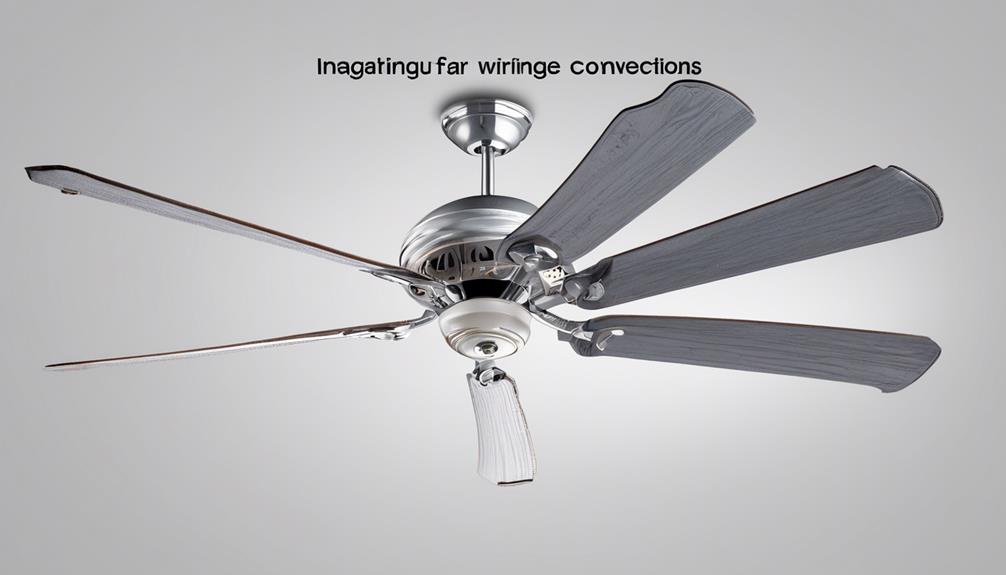
There are various types of connections used for fan regulators, each serving a specific purpose and offering unique advantages. One important aspect to consider when connecting a fan regulator is proper grounding. Proper grounding ensures the safety of the electrical system by providing a direct path for electrical faults to flow into the earth, preventing any potential hazards. It's crucial to connect the grounding wire of the fan regulator to a reliable ground source, such as a metal conduit or a grounding rod.
When troubleshooting common issues in fan regulator connections, it's important to first check the wiring connections. Loose or incorrect wiring can lead to a malfunctioning fan regulator. Additionally, it's important to ensure that the power supply is properly connected and functioning. Faulty power supply can cause the fan regulator to not work as intended.
Another common issue that may arise is the overheating of the fan regulator. This can be caused by improper wiring or excessive load on the regulator. It's important to ensure that the wiring connections are correct and that the fan regulator isn't being overloaded with excessive power demand.
Exploring Wiring Configurations for Fan Regulators
Various wiring configurations are used for fan regulators to ensure optimal performance and control of the fan speed. To explore these configurations and provide mastery in wiring techniques, let's discuss the following:
- Single-pole, single-throw (SPST) wiring: This is the simplest wiring configuration where the fan regulator is connected in series with the fan. The regulator controls the flow of current to the fan, allowing for speed control.
- Dual-pole, single-throw (DPST) wiring: In this configuration, two switches are used to control the fan speed. One switch is connected in series with the fan, while the other is connected in parallel. This allows for independent control of the fan speed and direction.
- Three-way wiring: This wiring configuration is used when you want to control a single fan from multiple locations. It involves using two three-way switches and a fan regulator. The switches allow you to turn the fan on or off and control its speed from different locations.
- Troubleshooting common connection issues: When wiring a fan regulator, it's important to ensure proper connections to avoid common issues. These can include loose or faulty connections, improper wire gauge, or incorrect wiring configurations. By double-checking the connections and using appropriate wiring techniques, you can troubleshoot and resolve these issues effectively.
The Role of Each Wire in Fan Speed Regulation

To understand the function of each wire in fan speed regulation, we will now examine the wiring configurations discussed previously. Proper wire connections are crucial for effective fan regulation. Each wire serves a specific purpose in controlling the speed of the fan.
In the previous section, we discussed three types of wiring configurations: two-wire control, three-wire control, and four-wire control. Let's take a closer look at the role of each wire in these setups:
| Wire Color | Wire Function |
|---|---|
| Black | Power Supply |
| Red | Speed Control |
| Blue | Neutral |
| Green | Ground |
In a two-wire control setup, the black wire provides power supply to the fan, while the red wire controls the fan speed. The blue wire serves as the neutral wire, and the green wire is for grounding.
In a three-wire control setup, the black wire is again responsible for power supply, while the red wire controls the fan speed. The blue wire acts as the neutral wire, and an additional wire, usually yellow, is connected to the capacitor for regulating fan speed.
In a four-wire control setup, all the wires serve the same functions as in the three-wire control setup, but an extra wire, usually white, is connected to the common terminal of the capacitor.
Properly connecting these wires is essential for accurate fan speed regulation. Any incorrect connections can lead to improper functioning or even damage to the fan. Therefore, it is crucial to carefully follow the wiring diagrams and instructions provided by the manufacturer for optimal performance.
Step-by-Step Guide to Connecting a Fan Regulator to a Fan
To properly connect a fan regulator to a fan, follow these step-by-step instructions for optimal performance:
- Step 1: Turn off the Power – Before beginning any electrical work, ensure that the power to the fan is turned off at the circuit breaker. This will prevent any accidents or damage during the installation process.
- Step 2: Identify the Wires – Take a close look at the wires coming out of both the fan regulator and the fan. Identify the live wire, neutral wire, and the wire connected to the fan motor. It's crucial to connect the wires correctly to ensure the fan regulator functions properly.
- Step 3: Connect the Wires – Using wire connectors, connect the live wire from the fan to the input terminal of the fan regulator. Connect the wire from the fan motor to the output terminal of the fan regulator. Finally, connect the neutral wire from the fan to the neutral terminal of the fan regulator.
- Step 4: Secure the Connections – Once the wires are connected, ensure that the wire connectors are securely fastened. Double-check all connections to ensure they're tight and free from any loose wires.
Can a Fan Regulator Be Used with a Wireless Fan?
Yes, a fan regulator can be used with a wireless fan. The wireless fan technology explained allows for the use of a fan regulator to adjust the speed of the fan wirelessly. This provides convenience and ease of control for users, making it a versatile and practical addition to modern homes.
Frequently Asked Questions
What Are the Safety Precautions to Consider When Connecting a Fan Regulator to a Fan?
When connecting a fan regulator to a fan, it's crucial to consider safety precautions and adhere to electrical requirements. Before starting, ensure that the power is turned off to avoid any electric shock.
Use appropriate wire connectors to secure the connections, making sure they're tight and insulated. Check the voltage rating of the fan regulator and ensure it matches the fan's electrical specifications.
Follow the manufacturer's instructions carefully to ensure a safe and proper connection.
Can a Fan Regulator Be Used With All Types of Fans, Including Ceiling Fans and Exhaust Fans?
Yes, a fan regulator can be used with different types of fans, including ceiling fans and exhaust fans.
Fan regulators provide the convenience of adjusting the speed of the fan according to our preferences, ensuring optimal comfort. They're compatible with various fan models, offering a wide range of speed control options.
Moreover, using a fan regulator also contributes to energy efficiency, allowing us to reduce power consumption and save on electricity bills.
How Can I Troubleshoot Common Issues With Fan Regulators, Such as a Non-Functioning Regulator or a Fan That Doesn't Respond to Speed Changes?
When troubleshooting fan regulators, we often encounter issues such as non-functioning regulators or fans that don't respond to speed changes.
To address these problems, we need to first identify the root cause. This may involve checking the electrical connections, ensuring the regulator is properly installed, or testing the functionality of the fan itself.
Are There Any Specific Electrical Requirements or Restrictions for Connecting a Fan Regulator to a Fan?
When it comes to connecting a fan regulator to a fan, electrical compatibility is key. It's important to ensure that the regulator and fan are compatible in terms of voltage and wattage.
Additionally, the installation process requires careful attention to detail. Following the manufacturer's instructions and wiring diagram is crucial to ensure a successful connection.
Can a Fan Regulator Be Installed in an Existing Fan, or Is It Only Possible During the Initial Fan Installation?
When it comes to fan regulator compatibility and installation, it's important to consider whether a fan regulator can be installed in an existing fan or if it's only possible during the initial fan installation.
To provide a step-by-step installation guide, we need to first understand the compatibility of the fan regulator with the existing fan model.
From there, we can proceed with the installation process, ensuring proper wiring connections and following the manufacturer's instructions for a successful installation.
Conclusion
In conclusion, connecting a fan regulator to a fan is a straightforward process that requires understanding the basics of fan regulators and the different types of connections. By exploring wiring configurations and understanding the role of each wire in fan speed regulation, users can confidently connect their fan regulator to their fan.
Taking the time to follow a step-by-step guide will ensure a successful and efficient connection, allowing for optimal fan control. Remember, knowledge is power when it comes to regulating fan speed.
- About the Author
- Latest Posts
Introducing Ron, the home decor aficionado at ByRetreat, whose passion for creating beautiful and inviting spaces is at the heart of his work. With his deep knowledge of home decor and his innate sense of style, Ron brings a wealth of expertise and a keen eye for detail to the ByRetreat team.
Ron’s love for home decor goes beyond aesthetics; he understands that our surroundings play a significant role in our overall well-being and productivity. With this in mind, Ron is dedicated to transforming remote workspaces into havens of comfort, functionality, and beauty.
Appliances
3 Smart HVAC Solutions for Compact Areas
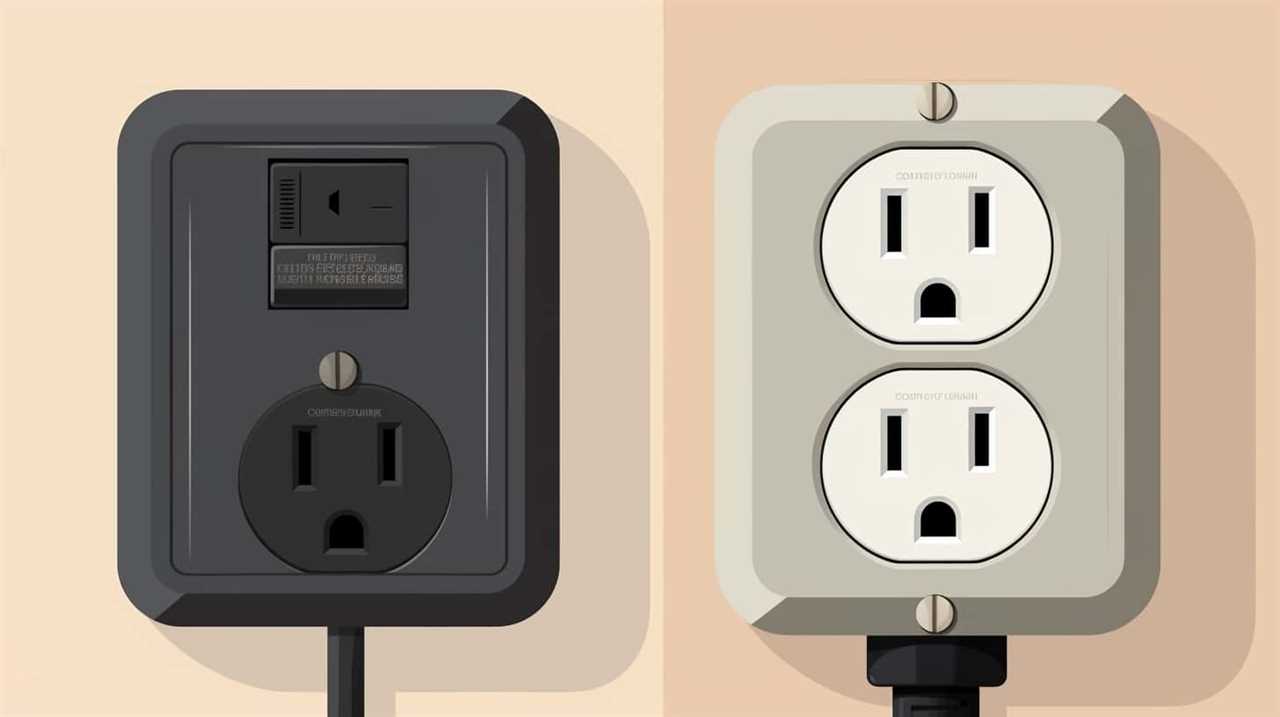
Searching for intelligent HVAC solutions for small spaces? Your search ends here! We offer three high-quality options that will ensure your area stays cozy and energy-efficient.
First up, we have Mini Split Systems. These compact wonders provide both heating and cooling in one sleek package. With their advanced technology and customizable settings, you’ll have complete control over your indoor climate.
Next, we have Window Air Conditioners. Perfect for small spaces, these units fit snugly in your window and deliver powerful cooling.
Lastly, we have Portable Heat Pumps. These versatile machines can easily be moved from room to room, providing heating and cooling wherever you need it most.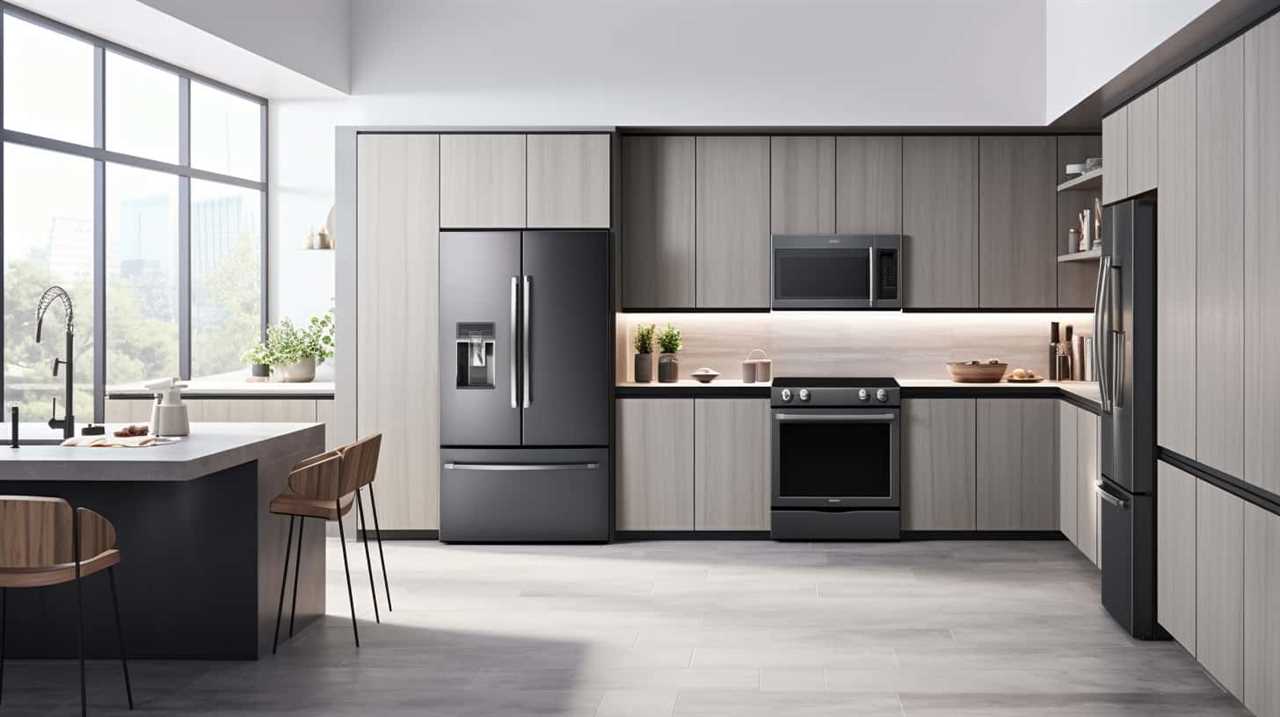
So, whether you’re a master of efficiency or simply looking to maximize comfort in a compact area, these smart HVAC solutions are sure to impress.
Key Takeaways
- Mini split systems provide efficient cooling and heating in compact areas.
- They offer flexibility in installation without the need for ductwork.
- Individual zone control allows for personalized comfort.
- Mini split systems have superior energy efficiency and quieter operation.
Mini Split Systems
We use mini split systems to efficiently cool and heat compact areas. Mini split systems, also known as ductless AC units, are a popular choice for energy efficient cooling in small spaces. These systems consist of two main components: an outdoor condenser unit and an indoor air handler. The condenser unit is responsible for cooling or heating the refrigerant, while the air handler distributes the conditioned air within the room.
One of the key advantages of mini split systems is their flexibility in installation. Unlike traditional central air conditioning systems that require extensive ductwork, mini split systems eliminate the need for ducts altogether. This makes them ideal for compact areas where ductwork installation may not be feasible or cost-effective.
Additionally, mini split systems offer individual zone control, allowing different rooms or areas to be cooled or heated independently. This not only increases energy efficiency by avoiding unnecessary cooling or heating of unoccupied spaces, but also provides personalized comfort for each room’s occupants.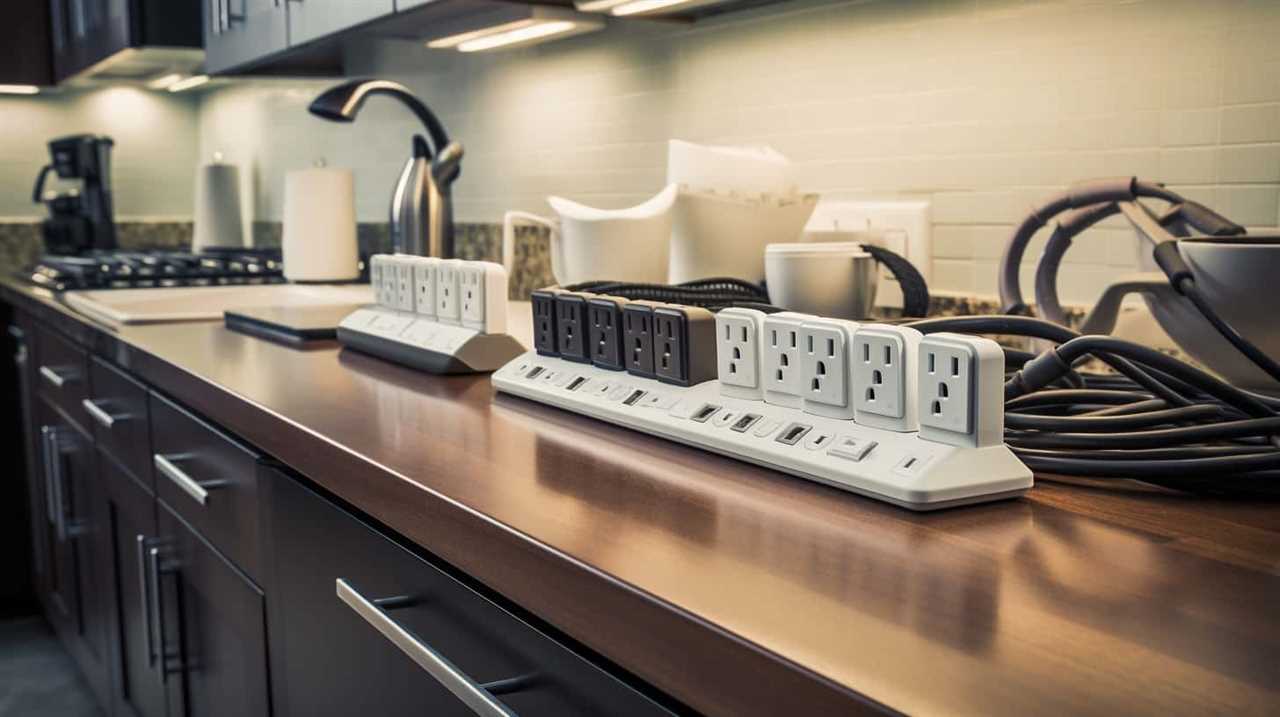
In comparison to window air conditioners, mini split systems offer superior energy efficiency and quieter operation. They’re also more aesthetically pleasing as the indoor air handlers can be mounted on walls, ceilings, or even recessed into the ceiling for a more discreet appearance.
With their ductless design, energy efficiency, and individual zone control, mini split systems are an excellent choice for efficiently cooling and heating compact areas. Now, let’s move on to the next section and explore the features and benefits of window air conditioners.
Window Air Conditioners
To effectively cool and heat compact areas, one smart HVAC solution is the use of window air conditioners. Window air conditioners are a popular choice for small spaces because of their energy efficiency and relatively simple installation requirements.
When it comes to energy efficiency, window air conditioners have made significant advancements in recent years. Many models now come with an Energy Star rating, indicating that they meet strict energy efficiency guidelines set by the Environmental Protection Agency. These units are designed to provide optimal cooling and heating while consuming minimal energy, helping you save on your utility bills.
Installation requirements for window air conditioners are generally straightforward. These units are designed to fit into standard-sized window openings, eliminating the need for extensive modifications to your space. Most models come with a mounting kit that includes brackets and screws to secure the unit in place. It’s important to ensure that the window is properly sealed to prevent air leakage and maintain optimal energy efficiency.
Portable Heat Pumps
One option for effectively cooling and heating compact areas is by using portable heat pumps. These compact devices offer energy-efficient options for maintaining comfortable temperatures in small spaces. Portable heat pumps are designed to be easily moved from room to room, providing targeted heating or cooling where it is needed most.
To engage the audience further, here is a table outlining some key features and benefits of portable heat pumps:
| Features | Benefits |
|---|---|
| Energy efficient | Reduces energy consumption and costs |
| Easy installation | No need for complex installation |
| Versatile | Can be used in various settings |
| Noise reduction | Incorporates noise reduction techniques |
Portable heat pumps are an excellent choice for those looking for energy-efficient cooling and heating solutions in compact areas. They offer the flexibility to be moved around as needed, providing comfort wherever it is required. Additionally, these devices incorporate noise reduction techniques, ensuring a quiet and peaceful environment. By utilizing portable heat pumps, you can effectively regulate the temperature in compact spaces while minimizing energy consumption.
Frequently Asked Questions
Are There Any Energy-Saving Features in Smart HVAC Solutions for Compact Areas?
Yes, there are energy-saving features in smart HVAC solutions for compact areas.
These solutions incorporate energy-efficient technologies to optimize heating, ventilation, and air conditioning systems.
By utilizing advanced sensors and automation, they can adjust temperature settings based on occupancy and outdoor conditions, reducing energy consumption.
Additionally, smart HVAC solutions offer cost-effective solutions by providing real-time energy usage data and allowing for remote monitoring and control.
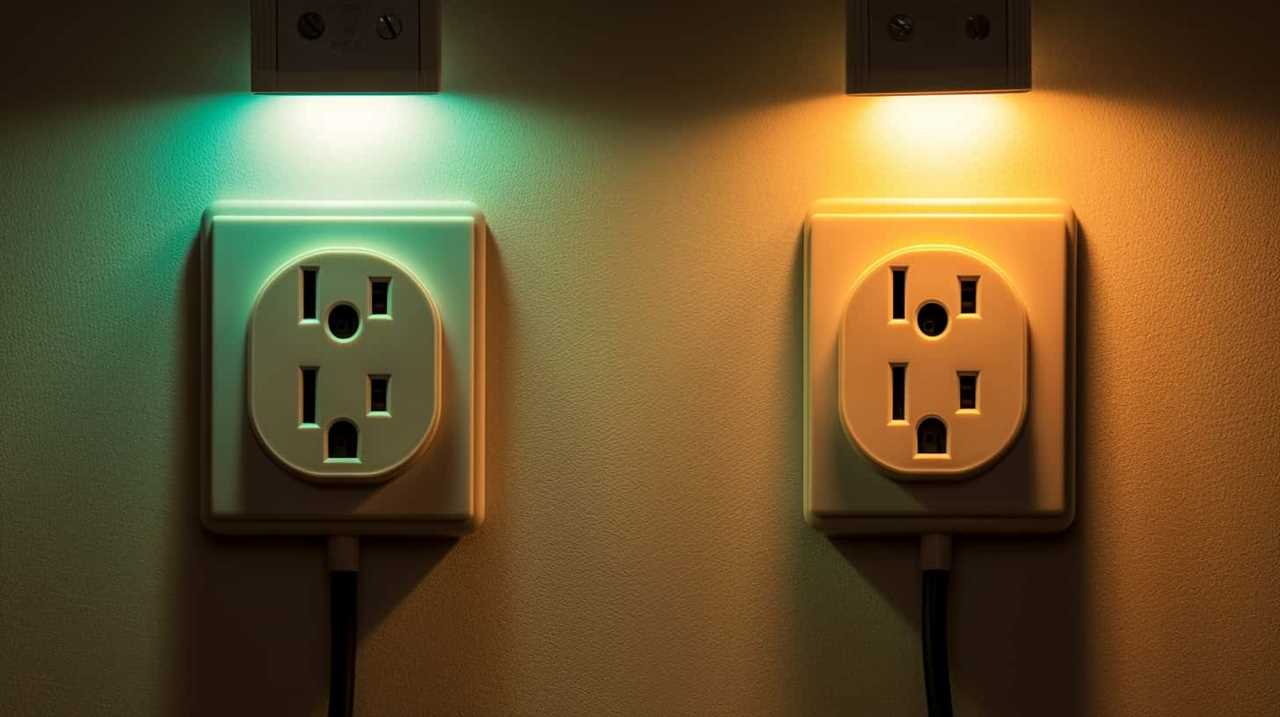
Can Smart HVAC Systems Be Controlled Remotely Through a Smartphone or Other Smart Devices?
Yes, smart HVAC systems can be controlled remotely through a smartphone or other smart devices. This feature is one of the many benefits of using a smart HVAC system.
The installation process for these systems involves connecting the HVAC unit to a Wi-Fi network and downloading the relevant mobile app. Once installed, users can easily adjust temperature settings, monitor energy usage, and receive notifications on their smart devices, providing convenience and energy-saving capabilities.
What Is the Average Lifespan of a Mini Split System?
The average lifespan of a mini split system is typically around 15 to 20 years. However, this can vary depending on factors such as maintenance, usage, and environmental conditions.
It’s important to note that regular maintenance and cleaning of the system can help prolong its lifespan.
Additionally, mini split systems are known for their energy efficiency, as they allow for zone cooling and heating, reducing energy waste and providing greater control over comfort levels.
Is It Possible to Install a Mini Split System Without Professional Assistance?
Installing a mini split system without professional assistance isn’t recommended. Professional installation offers numerous benefits, including expertise in proper placement, sizing, and wiring. Their knowledge ensures optimal performance and efficiency. Additionally, they can address any potential issues or complications that may arise during the installation process.
Attempting to install a mini split system without professional assistance can result in improper installation, decreased performance, and potential safety hazards. It’s best to rely on professionals for a successful and safe installation.
Are There Any Specific Maintenance Requirements for Portable Heat Pumps?
Specific maintenance requirements for portable heat pumps include:
- Regular filter cleaning or replacement
- Inspection of coils for dirt or debris buildup
- Checking for any leaks or unusual noises
Troubleshooting common issues involves:
- Checking the power supply
- Ensuring proper ventilation
- Adjusting the thermostat settings
It’s also recommended to schedule professional maintenance at least once a year to ensure optimal performance.
Conclusion
In conclusion, when it comes to HVAC solutions for compact areas, mini split systems, window air conditioners, and portable heat pumps are three smart options to consider.
Each of these solutions offers unique benefits and can effectively cool or heat small spaces.
Just as a skilled conductor orchestrates a symphony, these HVAC systems work in harmony to create a comfortable environment in tight spaces.
So, whether it’s a small apartment or a compact office, these smart HVAC solutions can efficiently meet your heating and cooling needs.
- About the Author
- Latest Posts
Introducing Charles, the Editor in Chief at ByRetreat, whose passion for interior design and editorial excellence elevates every remote workspace to new heights. With his keen eye for detail, impeccable taste, and expertise in design, Charles brings a wealth of knowledge and creativity to the ByRetreat team.
As the Editor in Chief of a renowned lifestyle blog, Charles has honed his skills in curating captivating content and staying up-to-date with the latest trends in interior design. His deep understanding of aesthetics and the power of storytelling through design enables him to create remote workspaces that are not only visually stunning but also rich in personality and meaning.
Appliances
3 Essential Tips for RV-Friendly Portable Washers

- Pros and cons of using eco friendly laundry detergent in a portable washer.
- Tips for preventing detergent residue buildup in a portable washer
Are you exhausted from constantly looking for laundromats during your RV trips? We get it. That’s why we’re here to provide three key tips for RV-friendly portable washing machines.
While you might be thinking, ‘Do I really need a portable washer?’ trust us, having one on your RV can be a game-changer. In this guide, we’ll show you how to choose the right size washer that fits your RV’s limited space, understand the power and water requirements to ensure smooth operation, and provide you with maintenance and cleaning tips to keep your washer running efficiently.
So, let’s dive in and master the art of laundry on the road!
Key Takeaways
- Consider the laundry capacity needed for your RV.
- Look for compact and lightweight options with space-saving features.
- Choose a portable washer with high energy efficiency and water conservation features.
- Regularly maintain and clean your portable washer using recommended cleaning products.
Choosing the Right Size
One of the first considerations when selecting a portable washer for our RV is determining the appropriate size. Portable washer features and space-saving options play a crucial role in making this decision. When it comes to size, it’s important to find a washer that fits well within the limited space of an RV, while still providing enough capacity to meet our laundry needs.
To begin with, portable washers come in a range of sizes, typically measured in pounds of laundry capacity. It’s essential to consider the amount of laundry we anticipate doing on a regular basis. While a smaller capacity may be suitable for individuals or couples, larger families might require a washer with a higher capacity to accommodate their laundry demands.
Additionally, it’s important to consider the physical dimensions of the washer. RVs have limited space, so opting for a compact and lightweight washer can help maximize the available room. Some portable washers are designed with space-saving features such as folding handles, detachable components, or even stackable options that can fit neatly into tight spaces.
Understanding Power and Water Requirements
When considering the power and water requirements for our RV-friendly portable washer, we need to understand the necessary resources for optimal performance.
Energy efficiency is an important factor to consider when choosing a portable washer for your RV. Look for models that have a high Energy Star rating, as this indicates that they consume less energy and can help you save on your electricity bills.

Additionally, portable washer features such as load sensing technology and adjustable water levels can help you conserve water. These features ensure that the washer only uses the amount of water necessary to clean your laundry, which is particularly crucial when you have limited water supply in your RV.
It’s also important to check the power requirements of the portable washer. Make sure that the washer is compatible with the power source available in your RV, whether it’s a standard 120-volt outlet or a 12-volt DC power source.
Understanding the power and water requirements of your RV-friendly portable washer won’t only help you achieve optimal performance but also contribute to energy and water conservation.
Maintenance and Cleaning Tips
Let’s talk about how to properly maintain and clean your RV-friendly portable washer. Taking care of your portable washer is essential to ensure its longevity and optimal performance. Regular maintenance and cleaning will help prevent any potential issues and keep your machine running smoothly. Here are some common troubleshooting tips and recommended cleaning products to keep in mind:
| Common Troubleshooting | Recommended Cleaning Products |
|---|---|
| Leaking water | Vinegar and water mixture |
| Excessive noise | Mild detergent |
| Drum not spinning | Baking soda |
| Error codes | Citric acid |
If you encounter a problem such as leaking water, try using a mixture of vinegar and water to clean the machine’s seals and hoses. For excessive noise, use a mild detergent to clean the drum and remove any debris that may be causing the noise. If the drum is not spinning, try using baking soda to remove any buildup that may be hindering its movement. Lastly, if you receive error codes, using citric acid in the detergent compartment can help clean the sensors and resolve the issue.
Remember to always refer to your portable washer’s manual for specific maintenance instructions and troubleshooting tips. By following these guidelines and using the recommended cleaning products, you can keep your RV-friendly portable washer in great condition and enjoy clean laundry on your travels.
Frequently Asked Questions
How Long Does It Typically Take to Wash a Full Load of Laundry Using a Portable Washer?
Typically, it takes around 30 to 45 minutes to wash a full load of laundry using a portable washer.
However, it’s important to consider the capacity limitations of these machines. Most portable washers have a smaller capacity compared to traditional washers, so it may take longer if you have a larger load.
It’s always a good idea to follow the manufacturer’s instructions and not overload the machine to ensure efficient and effective washing.
Can I Use Regular Laundry Detergent in a Portable Washer, or Do I Need to Use a Specific Type?
Yes, you can use regular laundry detergent in a portable washer. However, there are some pros and cons to consider.
Using eco-friendly laundry detergent in a portable washer is a great option for those who want to reduce their environmental footprint. It can be gentler on your clothes and safer for the environment.
However, some eco-friendly detergents may not be as effective at removing tough stains. To prevent detergent residue buildup, make sure to use the recommended amount of detergent and run an extra rinse cycle if needed.
Is It Safe to Leave a Portable Washer Unattended While It’s Running?
Safety precautions should be taken when using a portable washer unattended. There are potential risks involved, such as water leakage or electrical malfunctions. It’s important to follow the manufacturer’s instructions and guidelines for safe operation.
Some tips to minimize risks include ensuring a stable surface, avoiding overloading the machine, and regularly checking for any signs of damage.
It’s always best to err on the side of caution when it comes to leaving a portable washer running without supervision.
Can I Wash Delicate Fabrics, Such as Silk or Lace, in a Portable Washer?
When it comes to washing delicate fabrics like silk or lace in a portable washer, there are a few things to keep in mind.
Firstly, check the manufacturer’s instructions to ensure that your specific model is suitable for these types of fabrics.
Secondly, use a gentle cycle and cold water to minimize any potential damage.
Lastly, consider placing delicate items in a mesh laundry bag for added protection.
With these precautions, you can safely wash your delicate fabrics in an RV-friendly portable washer.

How Noisy Are Portable Washers When in Operation?
When it comes to the noise level of portable washers, it’s important to consider their energy efficiency as well. These machines are designed to be compact and efficient, so they tend to operate quietly. While they do make some noise during operation, it’s typically minimal and shouldn’t disturb your RV neighbors or disrupt your peaceful campsite.
Plus, their energy efficiency means you can enjoy clean clothes without draining your RV’s power supply.
Conclusion
In conclusion, choosing the right size portable washer for your RV, understanding power and water requirements, and following maintenance and cleaning tips are essential for a smooth laundry experience on the road.
By coincidence, we stumbled upon a fellow traveler at a campsite who’d just purchased a portable washer based on our article. They were thrilled with the convenience and efficiency it provided.
So, take these tips into consideration and enjoy clean clothes wherever your adventures take you!
- About the Author
- Latest Posts
Introducing Charles, the Editor in Chief at ByRetreat, whose passion for interior design and editorial excellence elevates every remote workspace to new heights. With his keen eye for detail, impeccable taste, and expertise in design, Charles brings a wealth of knowledge and creativity to the ByRetreat team.
As the Editor in Chief of a renowned lifestyle blog, Charles has honed his skills in curating captivating content and staying up-to-date with the latest trends in interior design. His deep understanding of aesthetics and the power of storytelling through design enables him to create remote workspaces that are not only visually stunning but also rich in personality and meaning.
Appliances
4 Smart Tips for Extended Commercial Appliance Warranties

Did you realize that nearly 80% of commercial appliance malfunctions happen after the manufacturer’s warranty runs out? As business operators, we grasp the significance of safeguarding our assets and reducing unforeseen costs.
That’s why we have compiled four smart tips for extended commercial appliance warranties that will help you make informed decisions and ensure the longevity of your appliances.
In this guide, we will discuss choosing the right warranty provider, understanding coverage and exclusions, evaluating the cost and value, and maximizing the benefits of extended warranties.
By following these tips, you can have peace of mind knowing that your appliances are protected and your business operations can continue smoothly.
Let’s dive in and master the art of extended warranties!
Key Takeaways
- Choose a warranty provider with a good reputation and track record.
- Understand the coverage details and limitations of the warranty.
- Evaluate the cost and value of extended warranties.
- Maximize the benefits by understanding the claim process and maintaining your appliances.
Choosing the Right Warranty Provider
When selecting a warranty provider for extended commercial appliance warranties, we should consider their reputation and track record in the industry. Identifying reputable providers is crucial to ensure that we’re dealing with a company that has a history of delivering on their promises and providing excellent service to their customers. A reputable provider will have a strong presence in the market and positive reviews from satisfied clients. They’ll also have a proven track record of handling warranty claims efficiently and resolving issues promptly.
In addition to reputation, it’s important to compare warranty terms offered by different providers. We should carefully review the terms and conditions of each warranty to ensure that they meet our specific needs and requirements. This includes understanding the coverage provided, such as if it includes parts and labor costs, and the duration of the warranty. It’s also important to consider any limitations or exclusions that may apply.
Understanding Coverage and Exclusions
To fully understand the extent of coverage and any exclusions, we should carefully review the warranty terms and conditions for our extended commercial appliance warranties. Many people have common misconceptions about what’s covered under these warranties, which is why it’s so important to read the fine print. Here are some key points to consider:
- Scope of coverage: It’s crucial to understand what types of repairs or replacements are included in the warranty. This may vary depending on the provider and the specific appliance being covered. Some warranties may only cover certain parts or components, while others may offer more comprehensive coverage.
- Exclusions: Even though warranties provide coverage, there are often exclusions stated in the terms and conditions. These exclusions may include damage caused by misuse, neglect, or unauthorized repairs. It’s important to be aware of these exclusions to avoid any surprises when filing a claim.
- Duration of coverage: Extended commercial appliance warranties can vary in terms of their duration. Some warranties may provide coverage for a fixed period of time, while others may offer coverage until a certain number of repairs or replacements have been made. Understanding the duration of coverage can help us plan for future maintenance and repairs.
- Claim process: Familiarizing ourselves with the claim process is essential. This includes knowing who to contact, what documentation is required, and any specific procedures that need to be followed to ensure a smooth and efficient claim experience.
Evaluating the Cost and Value
To determine the cost-effectiveness of extended commercial appliance warranties, we need to assess their overall value. When weighing options and considering budget considerations, it is essential to evaluate the benefits and drawbacks of purchasing extended warranties for your appliances. To help you make an informed decision, we have created a table that outlines the key factors to consider:
| Factors to Consider | Benefits | Drawbacks |
|---|---|---|
| Coverage | Extended protection beyond the manufacturer’s warranty period | Additional cost |
| Repair Costs | Potential savings on repair expenses | Warranty cost may outweigh repair costs |
| Peace of Mind | Assurance that your appliances are protected | Limited likelihood of appliance failure |
By considering these factors, you can determine whether the cost of an extended warranty is justified by its value. It is important to note that budget considerations should not be the sole determining factor. While extended warranties may come at an additional cost, they can provide peace of mind and potential savings on repair expenses.
In the next section, we will explore strategies for maximizing the benefits of extended warranties, ensuring that you get the most value out of your investment.
Maximizing the Benefits of Extended Warranties
To maximize the benefits of extended warranties, we can employ strategies that optimize our investment. By understanding the claim process and exploring renewal options, we can ensure that our commercial appliance warranties provide us with the maximum value and protection.
Here are some smart tips for maximizing the benefits of extended warranties:
- Thoroughly understand the claim process: Familiarize yourself with the steps involved in filing a claim. Know the required documentation, such as proof of purchase and warranty information. By being prepared, you can expedite the claim process and minimize downtime.
- Regularly maintain your appliances: Proper maintenance is crucial for the longevity and performance of your commercial appliances. Follow the manufacturer’s guidelines for cleaning, servicing, and inspections. Regular maintenance not only extends the lifespan of your appliances but also helps prevent potential issues that may require warranty claims.
- Research renewal options: When your extended warranty is about to expire, explore renewal options offered by the warranty provider. Some providers offer extended renewal plans with additional coverage, giving you continued peace of mind and protection for your investment.
- Keep warranty documents organized: Maintain a dedicated folder or digital file for all your warranty documents. This ensures easy access to necessary information when filing a claim or renewing your warranty.
Frequently Asked Questions
How Can I Extend the Warranty on My Commercial Appliance if It’s Already Expired?
To extend the warranty on your commercial appliance after it has expired, there are several renewal options available.
You can contact the manufacturer or a third-party warranty provider to inquire about their extended warranty programs. They may offer coverage plans specifically designed for appliances with expired warranty coverage.
It’s important to carefully review the terms and conditions, as well as the cost, of these extended warranty options to ensure they meet your needs and budget.
Are There Any Specific Requirements or Limitations for Obtaining an Extended Warranty for Commercial Appliances?
When obtaining an extended warranty for commercial appliances, it’s important to be aware of the common exclusions in extended warranty coverage. These may include wear and tear, cosmetic damage, and misuse or negligence.
To choose the right extended warranty, consider factors such as the length of coverage, cost, and reputation of the provider.
It’s also crucial to thoroughly read and understand the terms and conditions of the warranty to avoid any surprises down the line.
Can I Transfer My Extended Warranty to a New Owner if I Sell My Commercial Appliance?
Yes, you can transfer your extended warranty to a new owner if you sell your commercial appliance. This ensures that the warranty coverage for used appliances continues with the new owner.
It’s important to check the specific requirements and limitations of your extended warranty to ensure a smooth transfer process. By transferring the warranty, you provide peace of mind to the new owner and protect them against any unexpected repair or replacement costs.
What Happens if My Commercial Appliance Breaks Down Multiple Times During the Extended Warranty Period?
If your commercial appliance breaks down multiple times during the extended warranty period, you may be eligible for claim reimbursement. The repair or replacement timeline will depend on the terms and conditions of your warranty.
It’s important to thoroughly review the warranty agreement to understand the process and any limitations. Our team is here to help ensure that your claims are handled efficiently and that you receive the necessary repairs or replacements in a timely manner.
Is There a Limit to the Number of Claims I Can Make Under an Extended Warranty for My Commercial Appliance?
There are limitations to the number of claims we can make under an extended warranty for our commercial appliance.
However, it’s important to note that extended warranties offer numerous benefits for commercial appliances. They provide peace of mind by covering repairs and replacements, reducing downtime and maintenance costs.
Conclusion
In conclusion, when it comes to extended commercial appliance warranties, there are several crucial considerations to keep in mind.
Firstly, choosing the right provider is essential. It’s important to research and compare different warranty providers to ensure they have a good reputation and offer comprehensive coverage.
Understanding coverage and exclusions is also crucial. Businesses should carefully review the terms and conditions of the warranty to know exactly what is covered and what is not. This will help avoid any surprises or disappointments down the line.

Evaluating cost and value is another important factor. Businesses should consider the cost of the warranty in relation to the potential repair or replacement costs of the appliances. They should also assess the value of the warranty by considering additional benefits such as extended service hours or priority service.
Lastly, maximizing benefits is key. Businesses should take advantage of all the benefits offered by the warranty, such as regular maintenance or discounted repairs. This will help ensure the appliances are well-maintained and any issues are addressed promptly.
By following these smart tips, businesses can make informed decisions that protect their investments. Just like a well-oiled machine, a well-chosen warranty can provide peace of mind and keep the business running smoothly. So don’t leave your appliances vulnerable, take action and secure their longevity today.
- About the Author
- Latest Posts
Introducing Charles, the Editor in Chief at ByRetreat, whose passion for interior design and editorial excellence elevates every remote workspace to new heights. With his keen eye for detail, impeccable taste, and expertise in design, Charles brings a wealth of knowledge and creativity to the ByRetreat team.
As the Editor in Chief of a renowned lifestyle blog, Charles has honed his skills in curating captivating content and staying up-to-date with the latest trends in interior design. His deep understanding of aesthetics and the power of storytelling through design enables him to create remote workspaces that are not only visually stunning but also rich in personality and meaning.
-

 Vetted1 hour ago
Vetted1 hour ago15 Best Plants for Large Pots to Transform Your Outdoor Space
-

 Vetted2 days ago
Vetted2 days ago15 Best Folding Beds for Small Spaces – Space-Saving Solutions for Comfort and Convenience
-

 Vetted1 day ago
Vetted1 day ago15 Best Waterproof Flooring Options for Your Bathroom – Ultimate Guide & Reviews
-

 Vetted6 days ago
Vetted6 days ago15 Best Grocery Carts to Make Shopping a Breeze
-

 Vetted2 weeks ago
Vetted2 weeks ago15 Best Gravel for Driveway: The Ultimate Guide for a Durable and Stunning Entrance
-

 Vetted4 days ago
Vetted4 days ago15 Best Steam Generators for Showering Bliss: Reviewed & Rated
-

 Beginners Guides3 weeks ago
Beginners Guides3 weeks agoI Inhaled Vinegar Fumes
-

 Vetted2 weeks ago
Vetted2 weeks ago15 Best Hot Tubs of 2024: Luxurious Relaxation at Your Fingertips


















